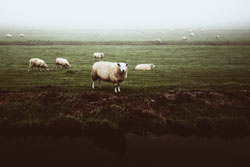Healthy fatty acids increased in sheep milk
As a food supplement or part of a naturally healthy diet, variants or isomers of conjugated linoleic acid (CLA) appear to be the panacea for many chronic ailments. Hailed as a treatment for excessive fat storage, insulin intolerance, some forms of cancer and atherosclerosis, it is a very popular dietary supplement. Natural sources are found mainly in meat and dairy products of ruminants. A team of scientists in Italy, partners from the European project GENESHEEPSAFETY, investigated the genetic basis for inheritance of CLA content in milk. Their research centred on the search for quantitative trait loci using scientifically recognised methodology in an across family analysis. The results of the within sire linear regression were then processed using QTL map software. Nutritionists have claimed that dairy animals that graze have a higher percentage of the acids in their milk than grain fed animals. Biochemically, the pathway in the animal is dependent on the presence of various genes. Basically, most of the CLA present in milk is due to an enzyme Scd. Produced by the polymorphic gene SCD, the enzyme is responsible for converting a precursor, vaccenic acid (VA), into CLA in the mammary gland. The team tested the milk of Sarda x Lacaune backcrossed ewes for fatty acids. Two traits were considered to be a reliable measure of the amount of CLA present - the amount of CLA itself and the ratio of CLA to VA. Ability to produce CLAs was found to be a highly heritable trait although environmental input was evident. There was an increase in overall CLA content of milk in grazing sheep in spring. In all, four quantitative trait loci (QTL) were identified. Of particular interest was the QTL on chromosome 22. Future research has been planned into fine mapping this candidate gene. Results of genetic studies of this nature incorporated into breeding programmes could be highly productive in the improvement of sheep milk quality. The market in sheep milk is under-exploited and holds much potential for European farmers, particularly in upland mountainous regions.







